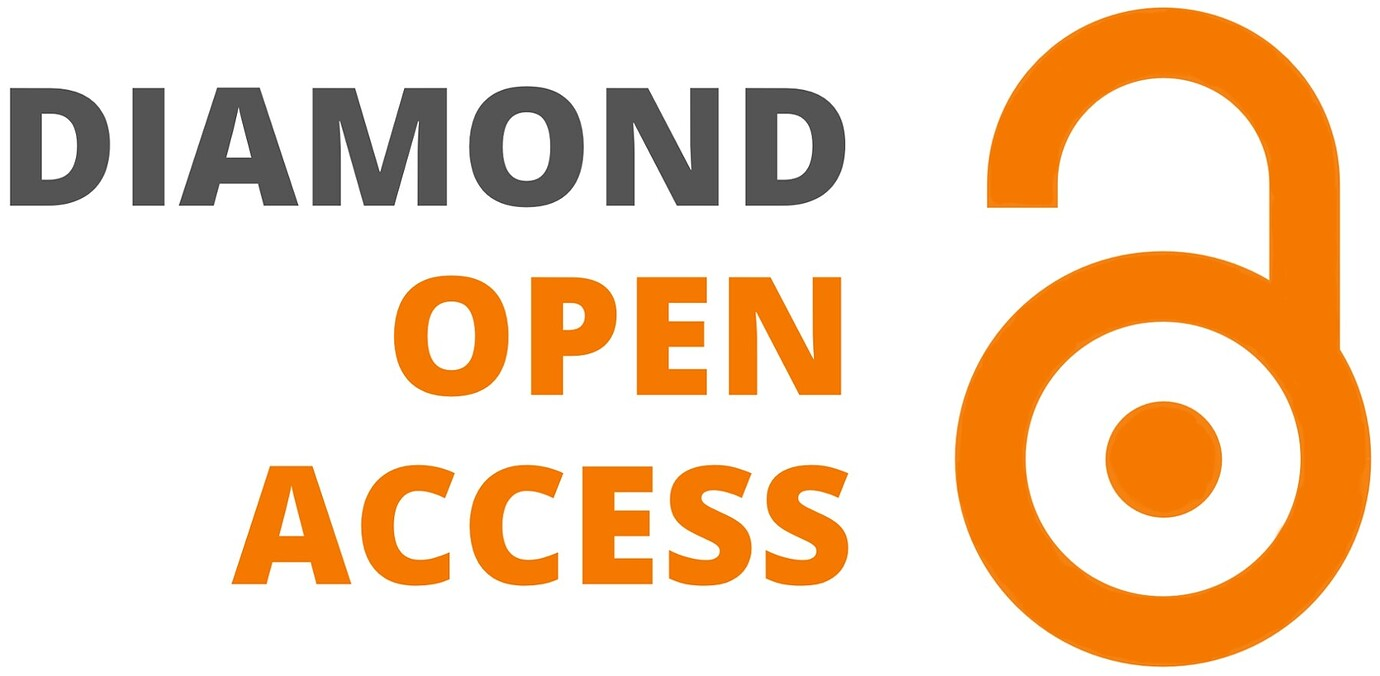Critical Article Reading as a predictor of a successful research career in speech and language therapy.
DOI:
https://doi.org/10.61989/b59p4h53Keywords:
critical reading, research, speech therapyAbstract
Context: Health professions’ in France recognize the concept of research since 2013. Out of 300 ECTS provided in initial studies in speech-language pathology, 10% are devoted to module 7 "Speech-language pathology research" including a new teaching called "article analysis methodology" in L3. This article analysis methodology introduces students to scientific research by training them to Critical Article Reading (LCA).
Aims: We collected results from students who graduated from 2018 to 2020 for 331 students.
Materials and Methods: We performed a correlation analysis between the LCA results’ on the one hand and the research project notes (DRT) in M1, communication with poster (M1), written brief (M2) and oral communication (M2) on the other hand.
Results: LCA results obtained in L3 are positively correlated with the DRT scores (r(330) = 0.211, p 0.0001) but also with communication with poster (r(330) = 0.211, p 0.0001) obtained in M1. On the other hand, we do not find any correlation between the LCA and written nor oral communication.
Conclusion: This research demonstrates the value of training speech-language pathology students’ in the critical reading of scientific articles in order to develop their critical thinking skills and their scientific method necessary for the development of quality research work.
References
Asokan, G. V. (2012). Evidence-based practice curriculum in allied health professions for teaching-research-practice nexus. Journal of Evidence-Based Medicine, 5(4), 226–231. https://doi.org/10.1111/jebm.12000
Audet, N. & Leclère, H. (2001) Les habiletés requises pour la lecture critique en médecine : un cadre de référence issu d’une recension d’écrits. Pédagogie Médicale, 2(4), 206-212. https://doi.org/10.1051/pmed:2001035
Beaucage, C., Simpson, A., & Bonnier-Viger, Y. (2009, 2e éd.) Épidémiologie appliquée : une initiation à la lecture critique de la littérature en sciences de la santé. Gaétan Morin Éditeur
Bennett, S., Hoffmann, T., & Arkins, M. (2011). A multi-professional evidence-based practice course improved allied health students' confidence and knowledge. Journal of Evaluation in Clinical Practice, 17(4), 635-639. https://doi.org/10.1111/j.1365-2753.2010.01602.x
Borel, S., & Gatignol, P. (2022). Communiquer dans un congrès ou publier un article. Dans S. Borel, P. Gatignol, A. Gros & T.-M. Tran (dir.), Manuel de Recherche en Orthophonie (p.164-173). DeBoeck Supérieur.
Buyx, A. M., Maxwell, B., Supper, H., & Schöne-Seifert, B. (2008). Medical ethics teaching. Wiener Klinische Wochenschrift, 120(21-22), 655-664. https://doi.org/10.1007/s00508-008-1097-z
Chamberland, M., & Hivon, R. (2005) Les compétences de l’enseignant clinicien et le modèle de rôle en formation clinique. Pédagogie Médicale, 6(2), 98-111 http://dx.doi.org/10.1051/pmed:2005015
Côté, R., & Tardif, J. (2011). Élaboration d’une grille d’évaluation. Recherche-action (ECEM). https://pedagogie.uquebec.ca/outils/elaboration-dune-grille-devaluation
Delage, H. (2022). Étude de cas uniques sur l’efficacité d'une thérapie : utilisation de lignes de base. Illustrations chez l’enfant. Dans S. Borel, P. Gatignol, A. Gros & T.-M. Tran (dir.), Manuel de Recherche en Orthophonie (p. 138-148). DeBoeck Supérieur.
Demeester, A., Vanpee, D., Marchand, C., & Eymard, C. (2010) Formation au raisonnement clinique : perspectives d’utilisation des cartes conceptuelles. Pédagogie Médicale, 11(2), 81-95. https://doi.org/10.1051/pmed/2010013
Dollaghan, C. A. (2007). The handbook for evidence-based practice in communication disorders. Paul H. Brookes Publishing.
Durieux, N., Vandenput, S., & Pasleau, F. (2013) Médecine factuelle : la hiérarchisation des preuves par le Center for Evidence-Based Medecine d’Oxford. Revue Médicale de Liège, 68(12), 644-649. https://hdl.handle.net/2268/159899
Durieux, N., Pasleau, F., Vandenput, S., & Maillart, C. (2013) Les orthophonistes utilisent-ils les données issues de la recherche scientifique ? Analyse des pratiques afin d’ajuster la formation universitaire en Belgique. Glossa spécial XIIIe rencontres d’Orthophonie, 113, 100-118. https://www.glossa.fr/index.php/glossa/article/view/588
Guérin Leroux, J. L. (2015). Évaluer pour faire apprendre. Dans L. Ménard & L. St-Pierre (dir.), Enseigner pour faire apprendre au collégial et à l’université. Chenelière/AQPC.
Harasym, P. H., Tsai, T.-C., & Hemmati, P. (2008) Current trends in developing medical students' critical thinking abilities. The Kaohsiung Journal of Medical Sciences, 24(7), 341-355. https://doi.org/10.1016/s1607-551x(08)70131-1
Laloi, A. (2022). Poser sa question de recherche sous la forme PICO. Dans S. Borel, P. Gatignol, A. Gros & T.-M. Tran (dir.), Manuel de Recherche en Orthophonie (p.23-25). DeBoeck Supérieur.
Laloi, A., & Gatignol, P. (2018) De l’analyse critique d’un article scientifique à son écriture en formation initiale d’orthophonie. Rééducation Orthophonique, 276, 185-204.
Maillart, C., & Durieux, N. (2014). L’evidence-based practice à portée des orthophonistes : intérêt des recommandations pour la pratique clinique. Rééducation Orthophonique, 257, 71-82. https://hdl.handle.net/2268/164564
Pradeau, F., Pradeau, M.-C., Chabaud, F., & Benz-Lemoine, E. (2001) La communication affichée ou poster. Revue Médicale de l‘Assurance Maladie, 32(2), 101-104. https://assurance-maladie.ameli.fr/etudes-et-donnees/2001-numero-2-revue-medicale-assurance-maladie
Scallon, G. (2004). L’évaluation des apprentissages dans une approche par compétences. DeBoeck.
Schelstraete, M.-A., & Maillart, C. (2012). Les défis d’une formation universitaire clinique en logopédie. Dans F. Estienne & F. Vanderlinden (dir.), Pratiquer l’orthophonie. Expériences et savoir-faire de 33 orthophonistes (p. 37-51). Elsevier –Masson.
Schiavetti, N., Metz, D. E., & Orlikoff, R. F. (2011). Evaluating research in communicative disorders (6th ed.). Allyn & Bacon. Pearson.
Schön, D. A. (1987). Educating the reflective practitioner: Toward a new design for teaching and learning in the professions. Jossey-Bass.
Streiner, D. L., Norman, G. R., & Cairney, J. (2015, 5e ed.). Health measurement scales: A practical guide to their development and use. Oxford University Press. https://doi.org/10.1093/med/9780199685219.001.0001
Tanda-Soyer, N., Eymard, C., & Alderson, M. (2014). État des lieux de l’initiation à la recherche dans la formation initiale en soins infirmiers : recherche et professionnalisation. Recherche en Soins Infirmiers, 116(1), 70-80. https://doi.org/10.3917/rsi.116.0070
Tétreault, S., Sorita, E., Ledoux, A., & Ryan, A. (2014) Guide francophone d’analyse systématique des articles scientifiques (GFASAS). Dans S. Tétreault & P. Guillez (dir.), Guide pratique de recherche en réadaptation. DeBoeck Supérieur. http://www.ergo-carafe.org/wp-content/uploads/2014/01/GFASAS1.pdf
Witko, A., Tourmente, B., Dessez, B. &, Decullier, E. (2021) French speech-language therapy students' interest in evidence-based practice: A survey. International Journal of Language & Communication Disorders, 56(5), 989-1008. https://doi.org/10.1111/1460-6984.12651
Downloads
Published
License
Copyright (c) 2023 Peggy Gatignol, Diane Picard, Stéphanie Borel, Aude Laloi

This work is licensed under a Creative Commons Attribution 4.0 International License.




